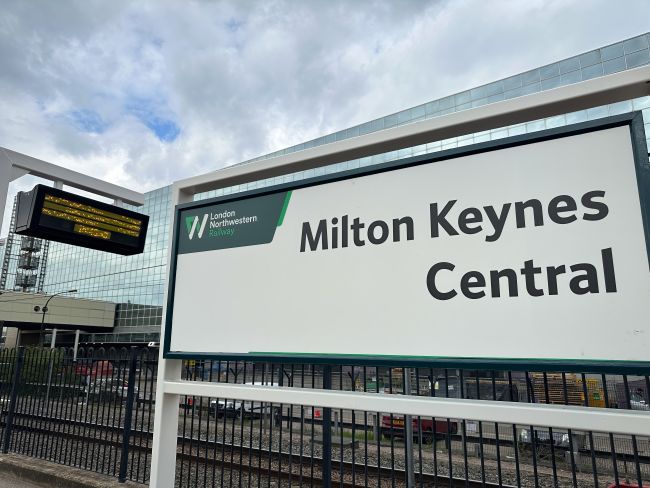The economic case for devolution from the UK Government to Yorkshire
The UK operates different devolution arrangements in different places – the UK’s largest county, Yorkshire, is seeking its own arrangements.

The UK operates different devolution arrangements in different places – the UK’s largest county, Yorkshire, is seeking its own arrangements.
England operates a centralised system of government, which has been undergoing a process of decentralisation over the past 20 years. In recent years, the focus of this process has been on ‘deals’ struck by central and local government and the introduction of ‘metro mayors’. The deals set out specific powers and budgets to enable areas to promote local economic, social and environmental wellbeing. The metro mayors receive powers and budgets from central government – and the powers and budgets vary from place to place to reflect local priorities.
Eighteen local authorities in Yorkshire, along with the Mayor of Sheffield City Region, are working together to make the case for the devolution of significant powers and budgets to Yorkshire and a newly established Mayor of Yorkshire. Central government requested an economic rationale for devolution to Yorkshire, as opposed to its constituent city regions. The 18 local authorities asked Steer Economic Development to assess the extent to which their local economies, when taken together, form a coherent economic area, and to identify opportunities for promoting economic growth at the level of Yorkshire.
The nature and scale of the issue
The Yorkshire and Humber region has a population of 5.6 million people, a workforce of 2.5 million, and more than 400,000 businesses of all types. It is a complex, polycentric and diverse economy that is worth around £112 billion a year. Yorkshire is twice the size of Wales and is larger than 13 countries in the European Union.
The region’s governance arrangements for business and economic development reflect its economic complexity. At the time of writing, eight of the region’s 22 local authority districts were members of more than one Local Enterprise Partnership, business-led groups with responsibility for setting economic development priorities for an area.
The complexity of interactions between sub-regional economies and local political and administrative boundaries in Yorkshire and Humber has stymied efforts to establish governance arrangements that are as economic, efficient and effective as they could be. Thus, current governance arrangements for business and economic development fail to make the most of the region’s economic potential.
The need for effective action to drive the region’s economic growth is clear: if the region’s gross value added (GVA) per head matched the UK’s, it would be c. £31 billion (c. 25%) higher. Furthermore, economic forecasts indicate that without action the GVA gap could grow to £42 billion a year by 2038.
Establishing the economic tests
In assessing the region’s economic coherence and strength of the case for devolution, we set some tests:
- What are the key sectors and industries in Yorkshire?
- To what extent are these sectors shared across Yorkshire?
- Is the Yorkshire economy sufficiently different from the rest of the UK for it to benefit from devolved powers and budgets?
We identified 16 industries that are significant employers which are shared across Yorkshire. We also found that Yorkshire’s economy is distinctive from the UK – based on its specialisation in manufacturing and in distribution, transport, accommodation and food.
To identify Yorkshire-level issues, we asked: What are the specific challenges and opportunities facing the region and what might be done at the level of Yorkshire to address them? We broke down the issues into five policy areas:
- International Trade & Investment;
- Skills;
- Business and Enterprise;
- Innovation; and
- Transport.
Is there an economic case for devolution?
Using data available at the regional level, we assessed Yorkshire and Humber’s performance relative to its share of the UK population, and we found scope for action to address:
- a £10.4 billion annual shortfall in the value of the region’s exports;
- a 7% shortfall in those qualified to NVQ 4 or above – a gap estimated to cost the economy c. £1.56 billion a year;
- a gap of around 56,000 businesses – generating a £15 billion a year hole in region’s output;
- a £1.35 billion annual shortfall in investment in Research & Development – with even greater long-term economic losses due to slow adoption of innovation; and
- a shortfall in investment on transport that is worth around £130 million a year and worth a total of £1.7 billion based on the known investment pipeline – with even greater economic losses in terms of inefficient labour markets, congestion, and pollution.
These gaps should not be treated as cumulative because some, such as innovation, highlight funding gaps (inputs to the region’s economy), while others, such as exports, point to shortfalls in GVA (outputs from the region’s economy), and others, such as skills, cut across policy areas and therefore carry a risk of double-counting. But together they are indicative of specific issues of under-investment and untapped potential that could be more effectively addressed at the Yorkshire level than current arrangements permit.
We suggest it is reasonable to argue that Yorkshire and Humber’s annual economic growth rate could be raised above trend – thereby helping to close the GVA gap over the next 20 years – provided the region has significant devolved powers and budgets for the policy areas that matter most: exports and inward investment, skills, business and enterprise, innovation, and transport and communications.
Written by Scott Dickinson, Associate, Steer Economic Development.

















